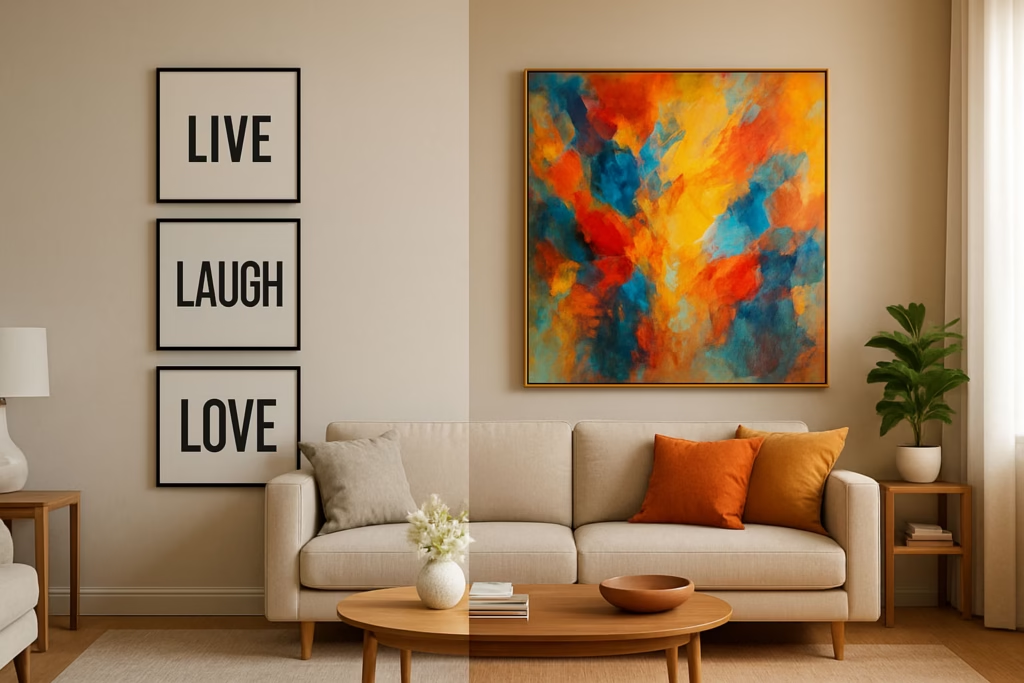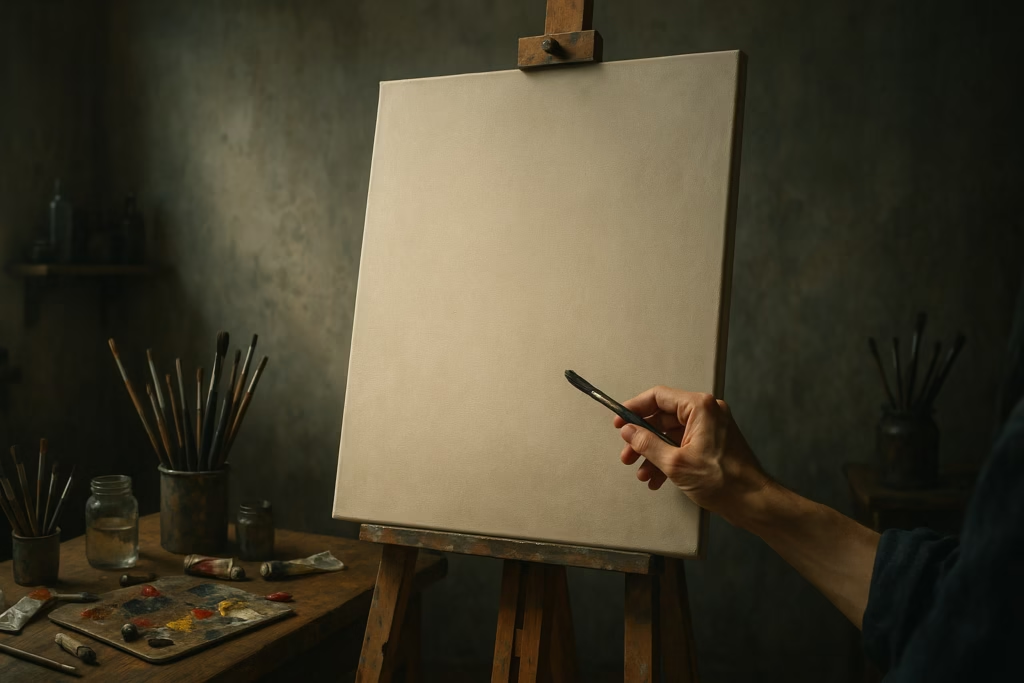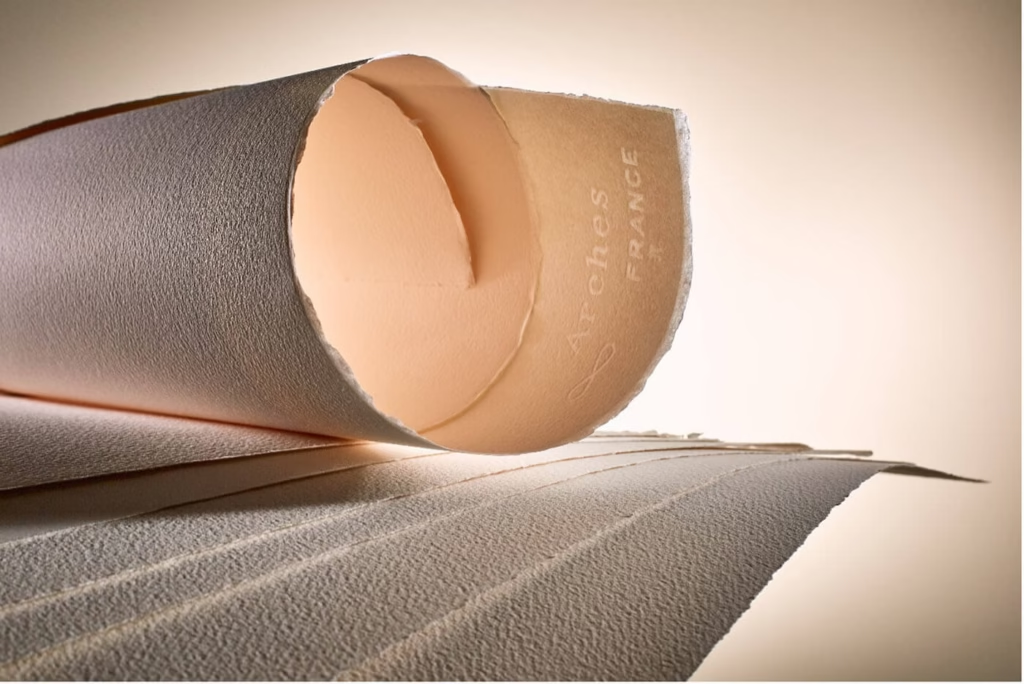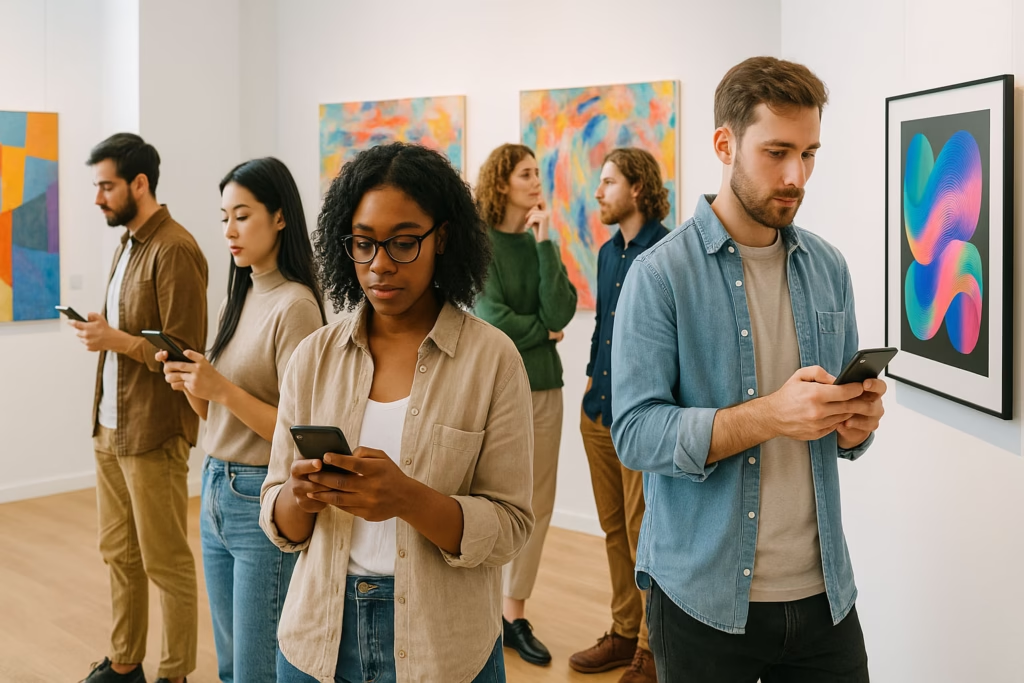In a world where 76% of consumers get frustrated with impersonal experiences, your walls are sending a message about who you are—but is it the right one? Walk into most homes today, and you’ll find the same mass-produced prints hanging in living rooms from New York to Los Angeles. The same generic landscape. The same inspirational quote in trendy typography. The same “Live, Laugh, Love” sentiment that’s been reproduced millions of times over.
But something profound is shifting in how we think about the spaces we inhabit. As our digital lives become increasingly standardized and algorithmic, there’s a growing hunger for authenticity, connection, and personal meaning. This hunger is driving what industry experts are calling the “personalization revolution”—and nowhere is it more evident than in the exploding custom art market.
The numbers tell a compelling story. The personalized gifts market, which includes custom artwork, was valued at $30.84 billion in 2024 and is projected to reach $63.28 billion by 2032—a staggering 9.4% annual growth rate. Meanwhile, the global wall art market is experiencing even more dramatic expansion, growing from $63.61 billion in 2024 to a projected $118.79 billion by 2032.
But this isn’t just about market statistics. It’s about something much deeper: our fundamental human need to see ourselves reflected in our environment, to surround ourselves with meaning rather than mass production, and to invest in pieces that tell our unique story rather than someone else’s generic vision.
The Personalization Revolution: Why We’re Done with Generic
The Numbers Don’t Lie: Custom Art Market Explosion
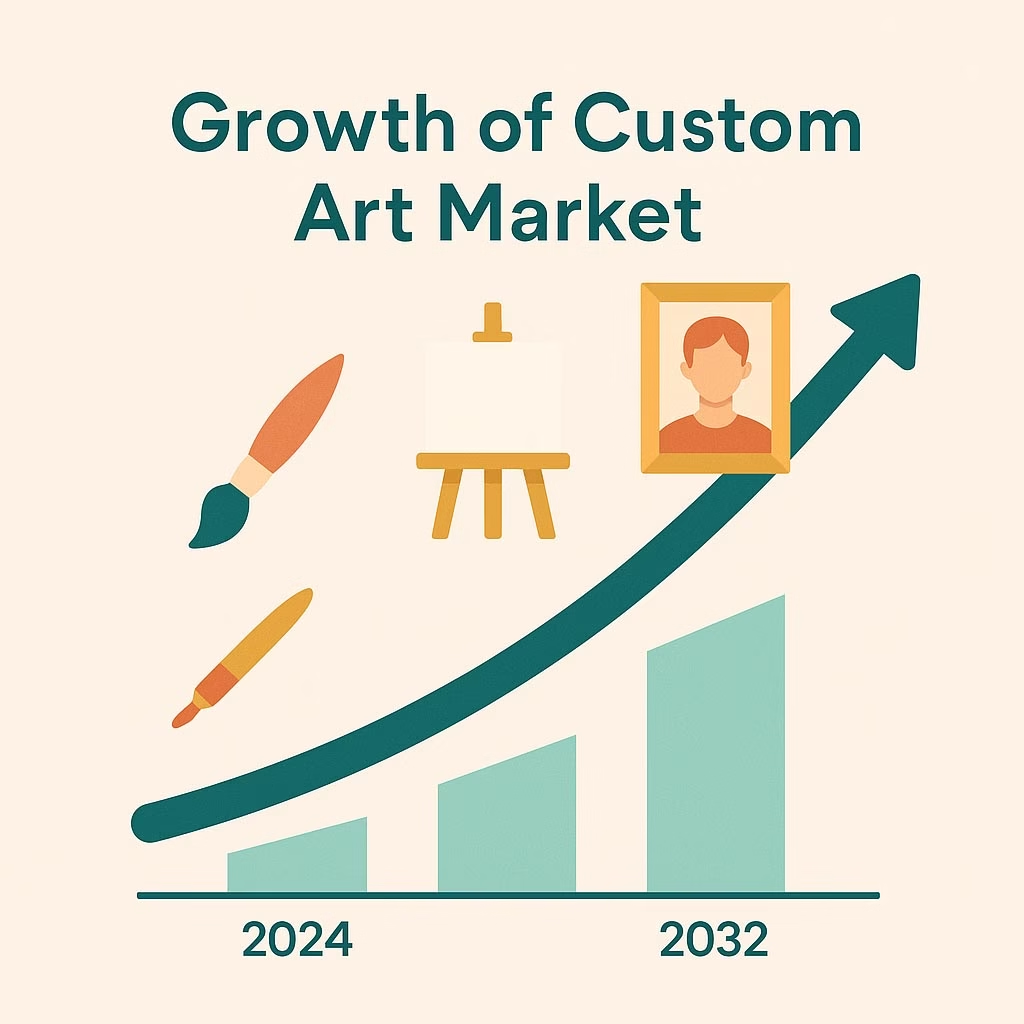
The data reveals a clear pattern: consumers are actively rejecting one-size-fits-all solutions across every category, and art is no exception. In 2025, nothing screams “on trend” more than personalization—whether it’s colorful patterns and geometric designs created specifically for your space or commissioned portraits that capture your family’s unique dynamic.
Consider these compelling statistics that illustrate the shift toward customization:
- 71% of consumers now expect personalized experiences in their purchasing decisions
- Companies offering personalized products report 40% fewer returns compared to generic alternatives
- Fast-growing companies generate 40% more revenue from personalization than their slower-growing counterparts
- 69% of millennial collectors bought art online in 2023, with this trend accelerating into 2025
But perhaps most telling is this insight: 1 in 3 consumers interested in customization feel that standard products simply don’t meet their expectations. When applied to wall art, this means that generic prints aren’t just failing to inspire—they’re actively disappointing the people who live with them every day.
The Psychology of “Mine vs. Theirs”
The preference for custom art runs deeper than mere aesthetics. It taps into fundamental psychological principles that govern how we relate to our possessions and our environment.
The Endowment Effect explains why we value things more highly once we own them—and this effect is magnified exponentially when we’ve participated in the creation process. When you commission a custom piece, you’re not just buying art; you’re co-creating it. This collaborative process creates what psychologists call “psychological ownership,” a sense of connection that goes far beyond the financial transaction.
Identity Expression Theory suggests that our possessions serve as external representations of our inner selves. A mass-produced print might match your color scheme, but a custom piece created specifically for you becomes an extension of your identity. It communicates your values, experiences, and aesthetic preferences in ways that generic art simply cannot.
Research in environmental psychology demonstrates that people perform better and feel more comfortable in spaces that reflect their personal identity. This isn’t just about feeling good—it’s about creating environments that actively support your well-being, creativity, and sense of belonging.
The Science Behind Why Custom Art Matters
Psychological Benefits of Personalized Spaces
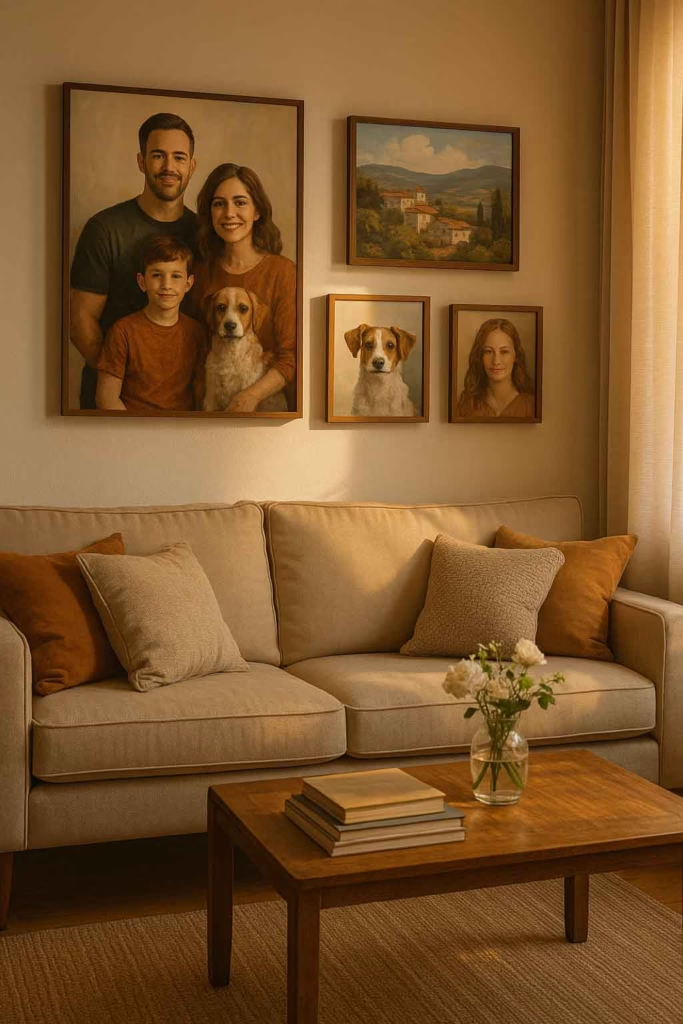
The impact of personalized art on mental health and well-being is both profound and measurable. Studies in environmental psychology have consistently shown that people who live and work in spaces that reflect their personal preferences experience:
Enhanced Emotional Well-being: Custom art that incorporates meaningful imagery, colors, or themes can serve as a daily source of positive emotion. Whether it’s a portrait of a beloved pet, a landscape from a meaningful trip, or an abstract piece in colors that resonate with your personality, personalized art creates emotional anchors throughout your space.
Reduced Stress and Anxiety: Familiar imagery has been shown to activate the parasympathetic nervous system, promoting relaxation and reducing cortisol levels. When your art tells your story, it creates a sense of safety and comfort that generic pieces simply cannot provide.
Improved Cognitive Function: Research indicates that people think more creatively and make better decisions in environments that feel personally meaningful. Custom art contributes to this sense of meaning by creating visual cues that remind you of your values, goals, and positive experiences.
Stronger Sense of Belonging: In an increasingly transient world, personalized art helps create a sense of “home” wherever you are. This psychological grounding is particularly important for remote workers, frequent movers, or anyone seeking to create deeper connections to their physical environment.
The Neuroscience of Personal Aesthetics
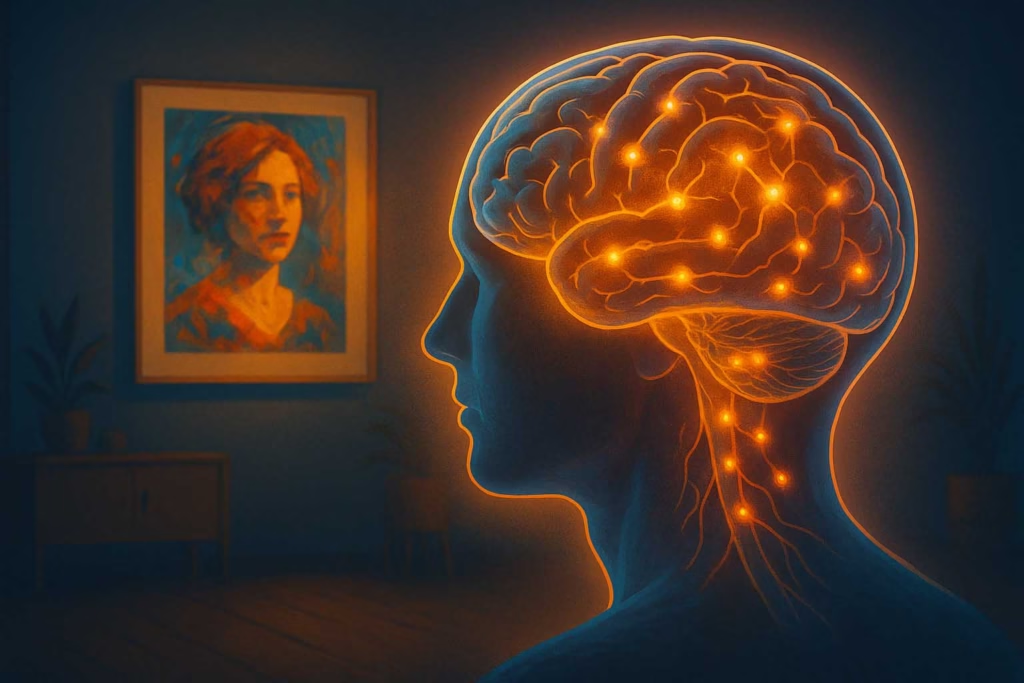
Recent advances in neuroscience have revealed fascinating insights about how our brains process art, particularly pieces that have personal significance. When we view custom art that incorporates familiar elements—whether faces, places, or personal symbols—our brains activate mirror neurons that create a sense of recognition and emotional resonance.
This neurological response is measurably different from our reaction to generic art. Brain imaging studies show that viewing personally meaningful artwork activates the medial prefrontal cortex, the same region associated with self-reflection and personal identity. This suggests that custom art literally helps us connect with ourselves on a neurological level.
Memory consolidation is another crucial factor. When artwork incorporates personal memories or experiences, it serves as a visual cue that helps strengthen those neural pathways. This is why a custom piece commemorating a special moment can continue to evoke positive emotions years after its creation—it’s actively reinforcing positive memories every time you see it.
Custom Art vs. Mass Market: The Real Differences
Quality Beyond the Canvas
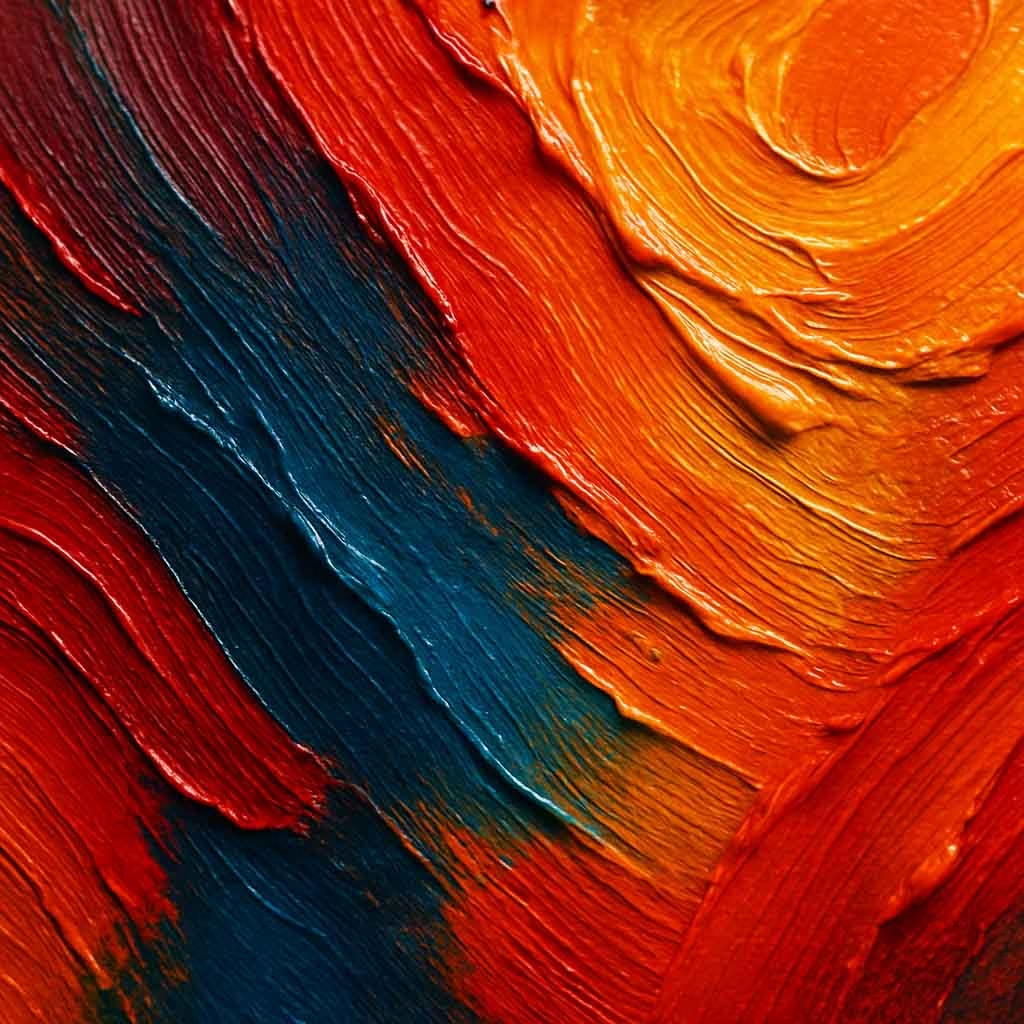
The distinction between custom and mass-produced art extends far beyond the image itself. Materials matter, and commissioned pieces typically use archival-quality canvases, professional-grade paints, and preservation techniques that ensure longevity. While a mass-produced print might fade or deteriorate within a few years, a properly executed custom piece can last generations.
Craftsmanship is another crucial differentiator. When you commission custom art, you’re investing in an artist’s skill, experience, and attention to detail. This human touch creates subtle variations, textures, and nuances that mechanical reproduction simply cannot replicate. The brushstrokes in an original painting, the unique way light plays across a textured surface, the slight imperfections that actually enhance rather than detract from the piece—these elements combine to create something that photographs beautifully but reveals even more depth in person.
Value retention is an often-overlooked benefit of custom art. While mass-produced prints typically depreciate immediately after purchase, original commissioned pieces often maintain or increase their value over time, particularly as the artist’s reputation grows. You’re not just decorating your space—you’re making an investment in both your environment and your portfolio.
The Story Factor
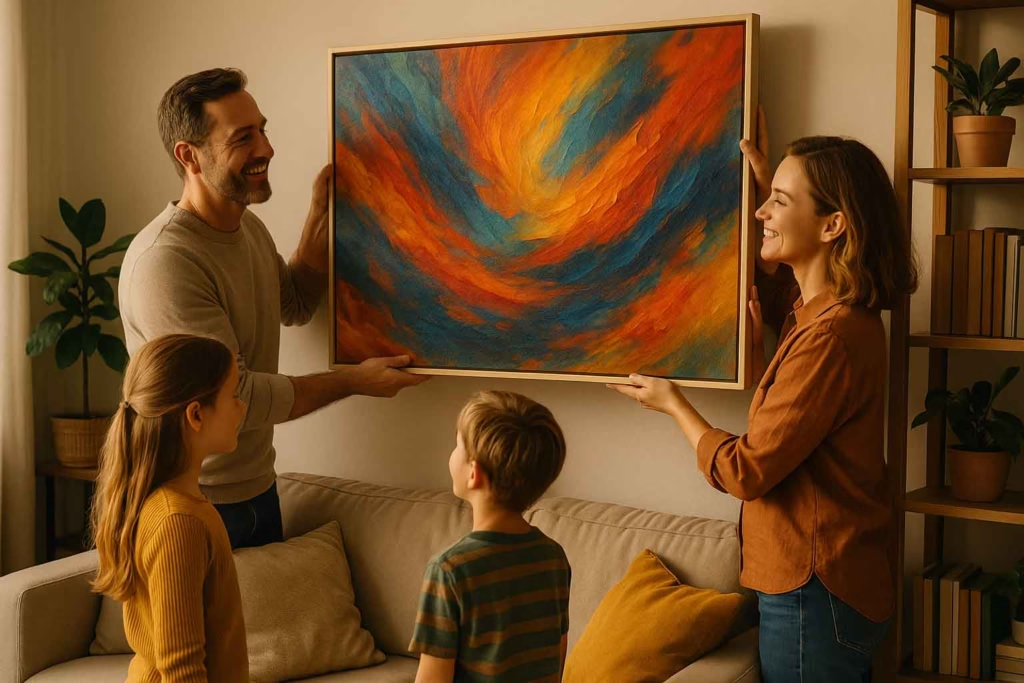
Perhaps the most significant difference between custom and generic art lies in narrative. Every commissioned piece carries a story: the inspiration behind it, the collaboration between artist and client, the creative process that brought it to life, the moment it was first hung in its intended space.
This story becomes part of the artwork’s value. When guests ask about a piece in your home, you’re not explaining where you bought it—you’re sharing the experience of its creation, the meaning behind its imagery, or the connection you feel to its themes. These conversations create deeper connections and more memorable experiences than any mass-produced piece could generate.
The story also creates legacy value. Custom pieces become family heirlooms, carrying forward not just aesthetic beauty but the narrative of why they were created. They become conversation starters for future generations, visual histories that connect family members across time.
2025 Trends Driving Custom Art Demand
Digital Natives Demand Authenticity
Generation Z and Millennials are leading the charge toward personalization, bringing both the expectation of customization and the technological comfort to make it happen. Having grown up in a world of customizable digital experiences—from personalized playlists to tailored social media feeds—these consumers expect the same level of personalization in their physical environments.
Social media influence plays a crucial role in this trend. In an age where homes are frequently photographed and shared, there’s increased pressure to create spaces that are not just beautiful but distinctively personal. Generic art doesn’t provide the uniqueness that social media audiences crave. Custom pieces, however, become conversation starters and engagement drivers, offering both aesthetic appeal and storytelling potential.
The “anti-mass production” movement reflects a broader cultural shift toward valuing craftsmanship, sustainability, and individual expression over convenience and cost-cutting. This demographic is willing to pay premium prices for products that align with their values and reflect their personal identity.
Trending Custom Art Styles for 2025
Based on current market analysis and consumer behavior patterns, several custom art trends are dominating 2025:
AI-Generated Custom Pieces represent the fascinating intersection of technology and personalization. Artists are using AI tools to create initial concepts based on client preferences, then adding human creativity and craftsmanship to produce truly unique pieces. This hybrid approach offers both innovation and personal touch.
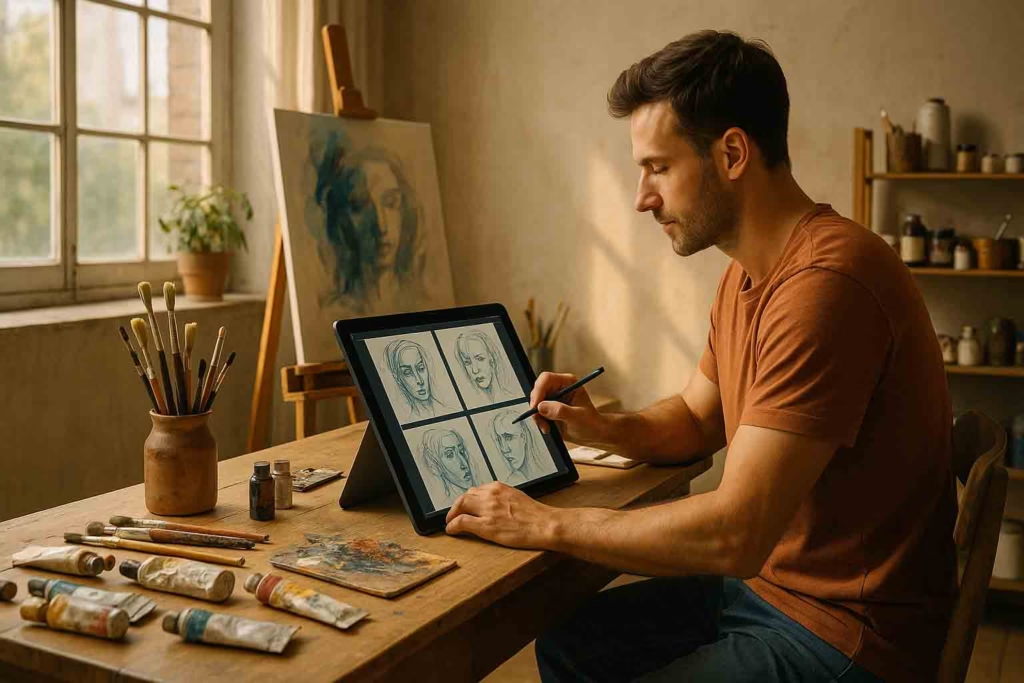
Sustainable and Eco-Friendly Art responds to growing environmental consciousness. Clients are requesting pieces created with recycled materials, sustainable practices, or themes that celebrate nature and environmental stewardship. Artists are responding with innovative approaches using everything from reclaimed wood to eco-friendly paints.
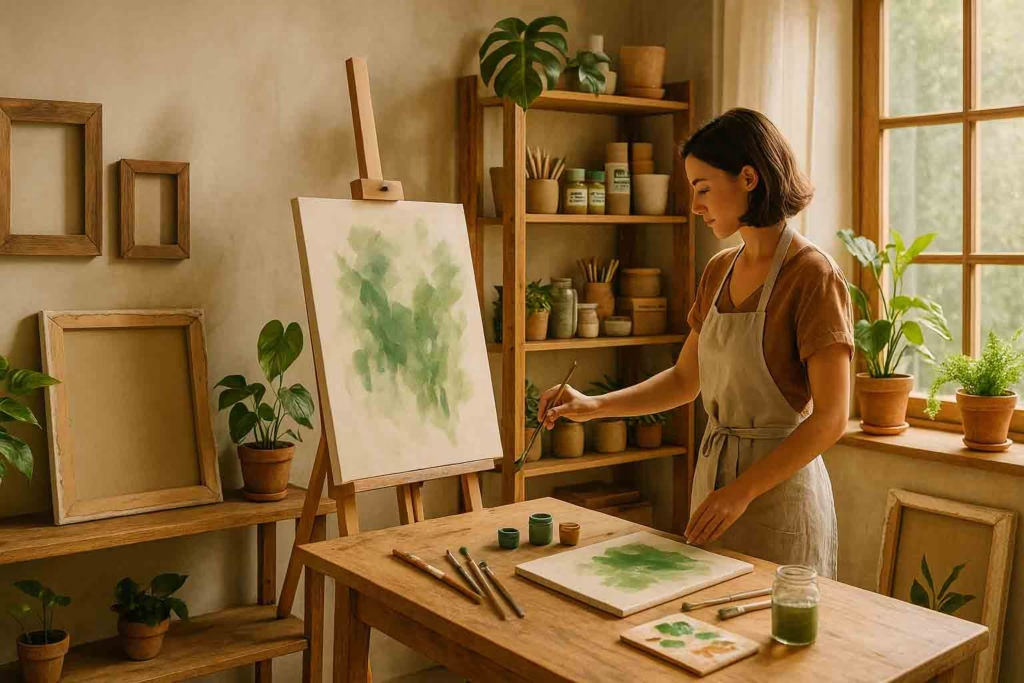
Bold Geometric Personalization moves beyond traditional portraiture into abstract territory. These pieces incorporate personal elements—favorite colors, meaningful shapes, important dates—into geometric compositions that feel both contemporary and deeply personal.
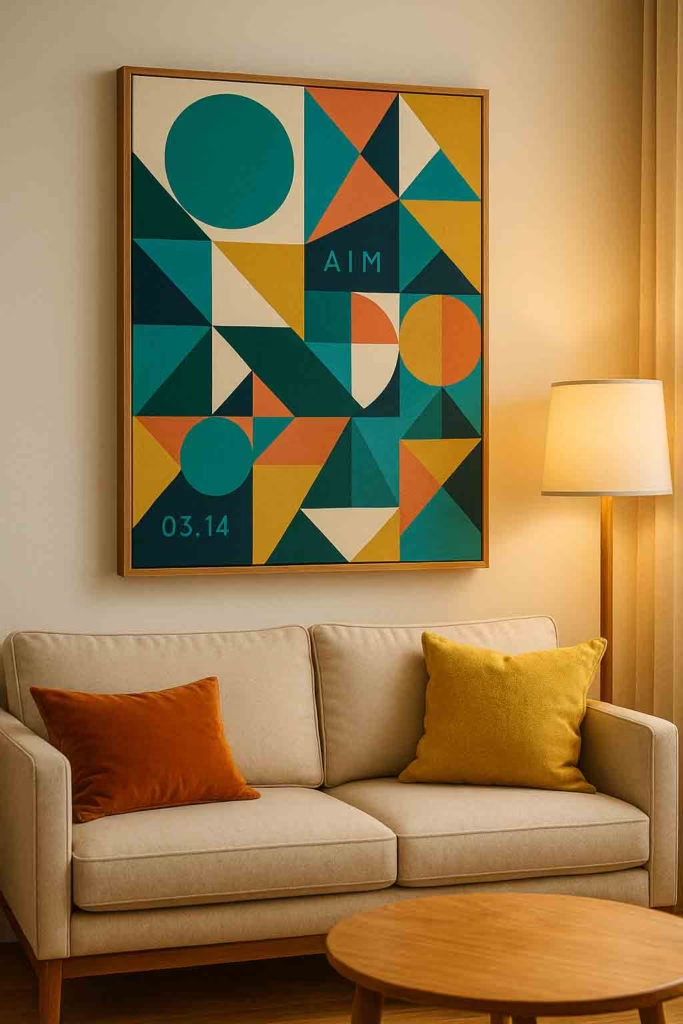
Nature-Inspired Custom Designs reflect the growing biophilic movement in interior design. These pieces don’t just depict nature generically but incorporate specific natural elements that hold meaning for the client: the tree they were married under, the mountain range from their favorite hiking spot, or the flowers from their grandmother’s garden.
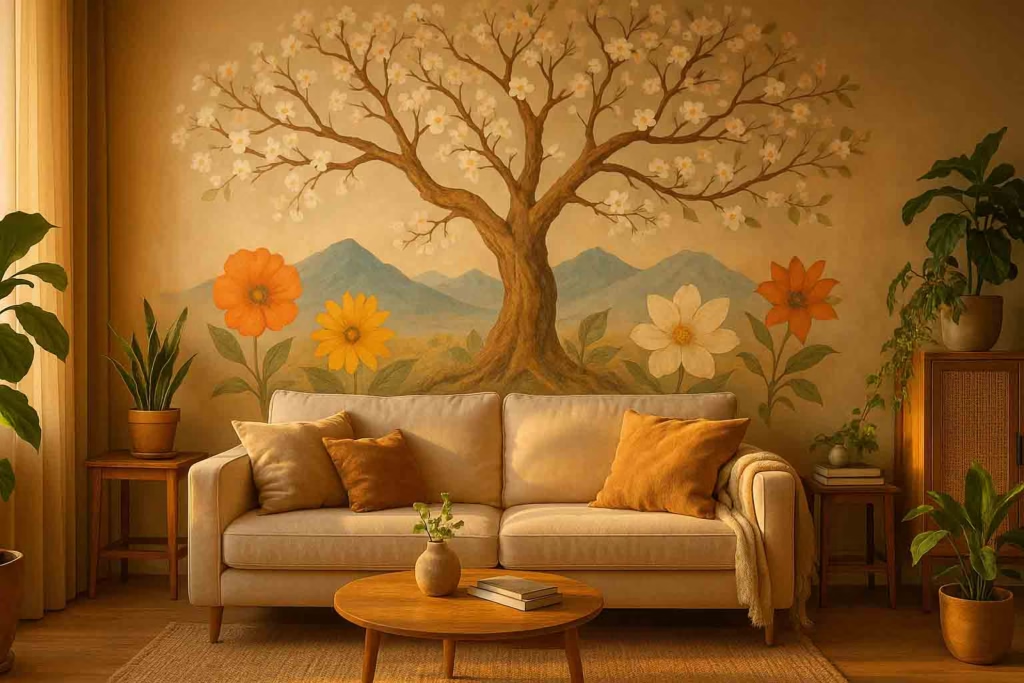
Nostalgic and Retro Customization taps into the powerful trend of nostalgia marketing. Artists are creating custom pieces that incorporate retro aesthetics while maintaining personal relevance—perhaps a travel poster in vintage style for a favorite destination, or a family portrait rendered in the style of a specific era.
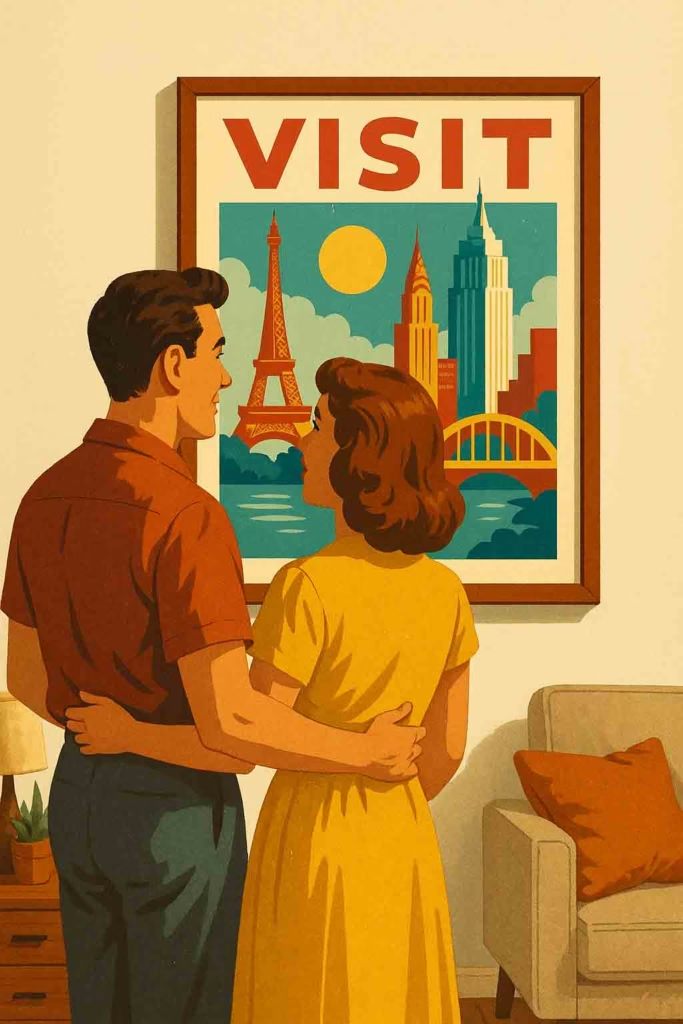
The Economic Case for Custom Art
Investment Value
When analyzed from a financial perspective, custom art often represents surprisingly sound value. While the upfront cost may be higher than mass-produced alternatives, several factors contribute to long-term financial benefits:
Appreciation Potential: As artists develop their careers and reputations, early commissioned pieces can increase significantly in value. By establishing a relationship with an emerging artist, you’re potentially investing in their future success.
Replacement Cost Avoidance: Mass-produced art typically needs replacement every few years due to changing trends, fading, or damage. Quality custom pieces, properly cared for, can last decades or even generations, making the per-year cost remarkably reasonable.
Emotional ROI: While difficult to quantify, the daily satisfaction and emotional benefit of living with meaningful art creates value that compounds over time. The confidence boost from having guests compliment your unique pieces, the daily inspiration from meaningful imagery, and the sense of accomplishment from supporting an artist all contribute to quality of life improvements that justify the investment.
The True Cost Analysis
When considering custom art, it’s helpful to break down the real cost per impact:
A $1,500 commissioned piece that hangs in your living room for 20 years costs $75 per year, or roughly $6 per month. During that time, it provides daily visual pleasure, serves as a conversation starter for hundreds of guests, and potentially appreciates in value. Compare this to a $150 mass-produced print that may need replacement every 3-5 years and provides minimal emotional connection.
The calculation becomes even more favorable when you factor in the reduced decision fatigue. With generic art, you’re constantly questioning whether it’s “right” for your space, leading to frequent changes and additional purchases. Custom pieces, created specifically for your space and preferences, tend to maintain their relevance and appeal over much longer periods.
How to Commission Your First Custom Piece
Finding the Right Artist
The success of your custom art investment depends heavily on choosing the right artist for your vision and budget. Start your search by:
Exploring Online Portfolios: Platforms like Instagram, Behance, and artist websites offer extensive portfolios that can help you identify artists whose style resonates with your vision. Pay attention not just to the finished pieces but to the artist’s communication style and professionalism.
Checking References and Reviews: Look for testimonials from previous clients, particularly those who commissioned similar types of work. Ask specific questions about communication, timeline adherence, and satisfaction with the final product.
Assessing Style Flexibility: Some artists work in very specific styles, while others can adapt their approach to client preferences. Determine whether the artist’s natural style aligns with your vision or if they’re comfortable working outside their typical aesthetic.
Evaluating Communication Skills: The commission process requires clear communication about expectations, preferences, and feedback. Choose an artist who demonstrates professionalism, responsiveness, and enthusiasm for collaborative creation.
The Commission Process
Understanding the typical commission process helps set appropriate expectations and ensures a smooth experience:
Initial Consultation: This crucial first step involves discussing your vision, budget, timeline, and practical considerations like size and placement. Be prepared to share inspiration images, color preferences, and any specific elements you want included.
Concept Development: Most artists provide initial sketches or concepts for approval before beginning the final piece. This stage is your opportunity to request modifications and ensure the direction aligns with your vision.
Creation Phase: Depending on the medium and complexity, creation can take anywhere from a few weeks to several months. Professional artists provide regular updates and may offer work-in-progress photos.
Final Delivery and Installation: Quality artists ensure proper packaging for delivery and may offer installation guidance or services. This is also when you’ll receive any care instructions or certificates of authenticity.
Transformative Custom Art Ideas for Every Space
Living Spaces That Tell Your Story
Your living areas offer the greatest opportunity for meaningful custom art because they’re where you spend most of your time and welcome guests. Consider these personalized approaches:
Family Portraits Reimagined: Move beyond traditional photography into artistic interpretations that capture personality rather than just appearance. Artists can create stylized portraits, incorporate meaningful backgrounds, or use innovative mediums like mixed media or digital illustration.
Travel Memories as Art: Transform your favorite travel experiences into custom pieces. This might be a watercolor of the Tuscan villa where you spent your honeymoon, a map-based artwork highlighting all the places you’ve lived, or an abstract piece inspired by the colors and textures of your most meaningful journey.
Pet Portraits and Personal Connections: Our relationships with beloved pets often deserve artistic commemoration. Custom pet portraits can range from photorealistic paintings to whimsical interpretations that capture personality and the special bond between human and animal.
Professional Spaces with Personality
Custom art in professional environments serves multiple purposes: it creates a more inviting atmosphere, demonstrates attention to detail and quality, and provides conversation starters that can enhance business relationships.
Office Art That Inspires: Commission pieces that reflect your company values or personal mission. This might be an abstract representation of growth and progress, a landscape that reminds you of your goals, or typography art featuring quotes that motivate you daily.
Brand-Aligned Custom Pieces: For businesses, custom art can reinforce brand identity while avoiding the generic corporate art trap. Work with artists to create pieces that incorporate your brand colors, reflect your company’s personality, or subtly reference your industry or expertise.
Conversation Starters That Build Relationships: Strategic placement of intriguing custom pieces can facilitate networking and relationship building. A unique piece naturally draws comments and questions, providing easy conversation starters in professional settings.
The Future of Personalized Art
Technology Integration
The intersection of technology and custom art is creating exciting new possibilities for personalization:
AR/VR Preview Capabilities allow clients to visualize commissioned pieces in their actual spaces before creation begins. This technology reduces uncertainty and ensures better satisfaction with size, color, and placement decisions.
NFT and Blockchain Authentication provide new ways to verify authenticity and ownership of custom pieces. Some artists now offer digital certificates that create permanent, tamper-proof records of creation and ownership.
AI-Assisted Customization Tools help artists and clients explore creative possibilities more efficiently. These tools can generate multiple concept variations, suggest color palettes, or create initial drafts that artists then refine with human creativity and skill.
Sustainability in Custom Art
Environmental consciousness is increasingly influencing art creation and collection:
Eco-Friendly Materials and Processes are becoming standard practice among leading custom artists. This includes everything from sustainable canvas materials to low-VOC paints and environmentally responsible framing options.
Local Artist Support reduces transportation environmental impact while strengthening community connections. Commissioning from local artists creates economic value in your community while minimizing the carbon footprint of your art collection.
Circular Economy Approaches include artists who specialize in transforming existing materials into new artworks, or who offer updating and refreshing services for existing pieces rather than complete replacements.
Taking Action: Your Custom Art Journey Starts Now
The evidence is clear: custom art isn’t just a luxury—it’s an investment in your environment, well-being, and daily quality of life. In a world increasingly dominated by generic, mass-produced experiences, choosing to surround yourself with meaningful, personally relevant art is both a form of self-care and a statement of values.
The market conditions have never been more favorable for this investment. With the custom art market experiencing explosive growth and technology making the commission process more accessible than ever, now is the ideal time to take action.
Start small if you’re hesitant. Commission a single piece for a space where you spend significant time—perhaps your bedroom, home office, or main living area. Experience the difference that personalized art makes in how you feel about and interact with that space.
Research and connect with artists whose work resonates with your aesthetic preferences. Take time to review portfolios, read client testimonials, and have initial conversations about your vision and budget.
Consider the long-term perspective. While custom art requires a larger upfront investment than mass-produced alternatives, the daily satisfaction, emotional connection, and potential appreciation make it a decision you’re unlikely to regret.
The art on your walls is a daily choice about the environment you create for yourself and your family. In 2025, with all the tools and talented artists available, why settle for someone else’s generic vision when you can live surrounded by art that tells your unique story?
Your walls are waiting to tell your story. Isn’t it time you gave them something meaningful to say?
Ready to commission your first custom piece? Download our free “Complete Guide to Commissioning Custom Art” for artist vetting checklists, budget planning worksheets, and insider tips that will ensure your first commission experience is everything you hope it will be.

